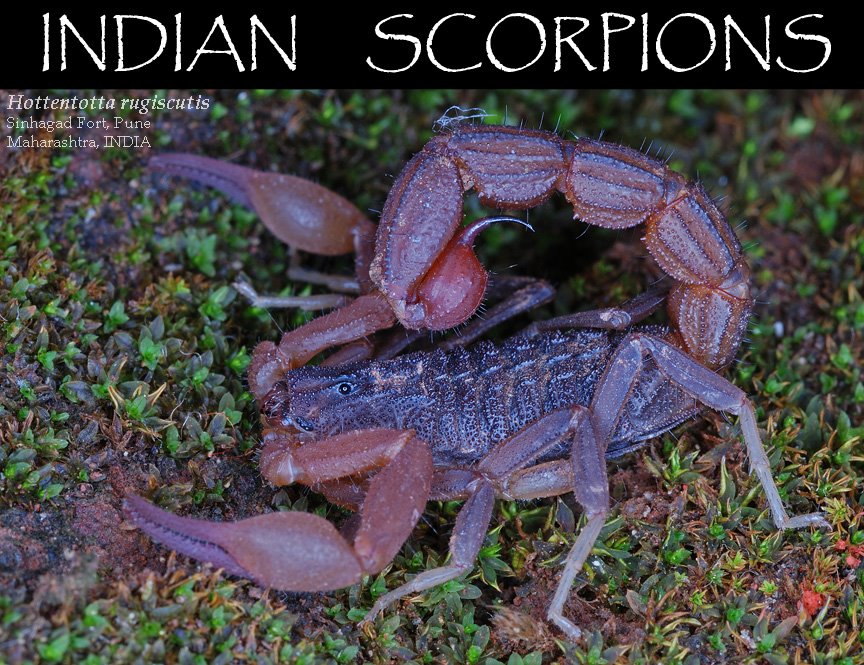Just back from a brief visit to Bhimashanker. Had gone there specifically for finding two scorp species that had eluded me for quite some time. Though I had seen both the species once or twice before, I never managed to photograph them.
This time I managed to get hold of one of those species Neoscorpiops taenicauda and pop it...
The genus Neoscorpiops is endemic to India and is known only from a few restricted localites.
The genus is represented by only three species viz. N. satarensis from Mahabaleshwar and Satara in Maharashtra, N. deccanensis known only from the type locality Sihnagad forest in Pune distrct in Maharashtra and N. taenicauda Matheran and Bhimashanker in Maharashtra.
These are black coloured, small to medium sized scorps which generally are found in stone cervices or under rocks. They are scorps of moderately high elevations and are conspicuously absent at low elevations. The species can be distinguished from each other by the number of ventral trichobothries on the patella.
A publication by Dr. Bastawade in JBNHS is wroth reading for anyone who is interested in working on these scorps. In case anyone wants details let me know i can forward a copy of the MS.
Cheers
Aamod



